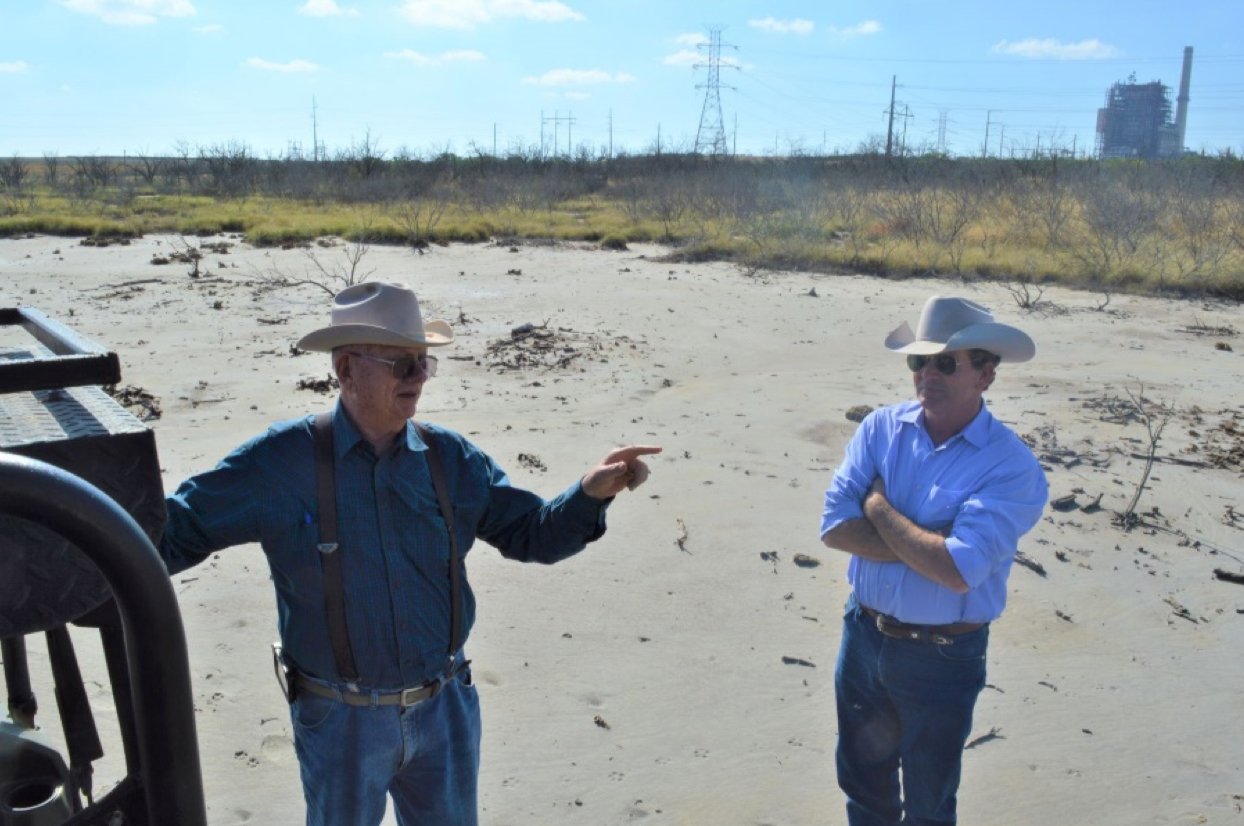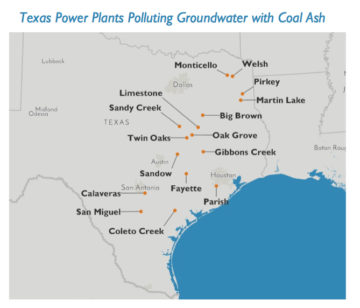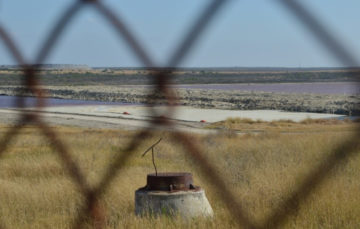
Report: Power Plants are Leaking Cancer-Causing Toxins into Groundwater Across Texas
An environmental group found that all of Texas’ coal-fired power plants have polluted groundwater with multiple chemicals, including arsenic, which was detected at 13 of the 15 sites.

Above: South Texas ranchers Jason Peeler (left) and Alonzo Peeler, Jr. (right).
In 1975, Alonzo Peeler Jr. figured that selling a small section of his ranchland to a power company was a sage financial move. Now 78, the lifelong rancher says he never would have guessed that San Miguel Electric Co-op, which operates a 440-megawatt power plant 65 miles south of San Antonio, would transform the property into a dump for toxic waste, contaminating groundwater and killing vegetation. And Peeler, who took the company to court over the pollution in August, is shocked that San Miguel Electric Co-Op is seeking to seize one-third of his ranch through eminent domain to avoid cleaning up their act.
“I wish I would have been fortunate enough 40 years ago to question this, ‘cause then we wouldn’t be having all these problems,” Peeler told the Observer. His 25,000-acre ranch now holds a dubious distinction: Of all the groundwater adjacent to coal-fired power plants in Texas, the water beneath the ranch is the most contaminated, according to a report released Thursday by the Environmental Integrity Project (EIP). Arsenic levels there are 12 times higher than what’s considered safe by the Environmental Protection Agency. Massive levels of beryllium and cadmium, both known human carcinogens, have been detected in the water; beryllium at 190 times the safe level and cadmium at 130 times. The report also says that just across Peeler’s property line, San Miguel Electric Co-op operates improperly lined lagoons that hold coal ash, which is the toxic byproduct of burning coal to produce electricity.
On Peeler’s ranch and across Texas, coal ash contaminants have leached “into groundwater, poisoning drinking water aquifers and harming aquatic life in nearby surface waters,” the report says. The new information paints a staggering picture for Texas: All 16 plants for which data was available have tainted groundwater supplies with coal ash waste, and all but “one or two” have failed to properly line the bottoms of disposal ponds. The report appears to reveal widespread coal ash pollution stretching from South Texas along the Gulf Coast and into the northeast corner of the state.

“The ubiquitous contamination shows that both the industry and Texas regulators have consistently failed to protect Texas groundwater,” the EIP report reads. In a prepared statement sent to the Observer, a San Miguel Electric Co-op spokesperson said there’s “no evidence that any laws have been broken or that the ponds are impacting drinking water… Well qualified experts are continuing to assess the groundwater to determine what, if any impacts have occurred from San Miguel operations, as well as from the Peeler’s own actions.”
While power plants’ propensity to foul nearby air is well-documented, the danger of coal ash dumping has seen much less play in the news media. In fact, Peeler might never have known about his ranch’s spoiled water if not for a 2015 Obama-era rule that required power plant operators, for the first time, to test nearby sources of groundwater for contaminants.
Meanwhile, the Trump administration has loosened coal ash dumping rules, relaxing pollution thresholds for certain contaminants and allowing states to waive some groundwater monitoring requirements. The action fits within the larger trend of Trump and U.S. Secretary of Energy Rick Perry trying their damndest to prop up coal despite it being a wildly inefficient vehicle for energy generation. At the state level, the Texas Commission on Environmental Quality (TCEQ) proposed in August a “deeply flawed” plan to regulate coal ash disposal, the report says. The TCEQ plan was later withdrawn.
Representatives from TCEQ did not respond to a request for comment.

Many of the plants identified in the report are also major air polluters. Near San Antonio’s Calaveras Lake, CPS Energy’s J.T. Deely Station, for example, spit out 1,300 tons of ozone-producing nitrogen oxides in 2016 as improperly lined coal ash pits leaked unsafe levels of beryllium, cobalt and lithium into groundwater. Deely and other plants identified in the report, such as AEP’s Welsh Unit near Mt. Pleasant and Luminant’s Big Brown near Fairfield, are already on a path to retirement — their operators opted to close the facilities instead of installing new air pollution controls. The San Miguel plant itself is a potent air polluter: It is the single highest contributor of ozone-producing pollutants in Bexar County, which does not meet federal air quality standards for ozone.
Peeler, the rancher, is hoping his legal battle to clean up San Miguel’s coal ash lagoons doesn’t cost him the ranch. After he notified the company that he intended to sue over the “toxic brew of carcinogens, neurotoxins and poisons” seeping into the water, San Miguel filed its own lawsuit in state district court in August. Instead of agreeing to remediate its disposal pits, the company told the court it needed to seize 7,300 acres of Peeler’s ranch to keep the power plant operational — a move necessary to maintain the integrity of the electric grid, it said in a legal filing. A trial date is tentatively set for September.


